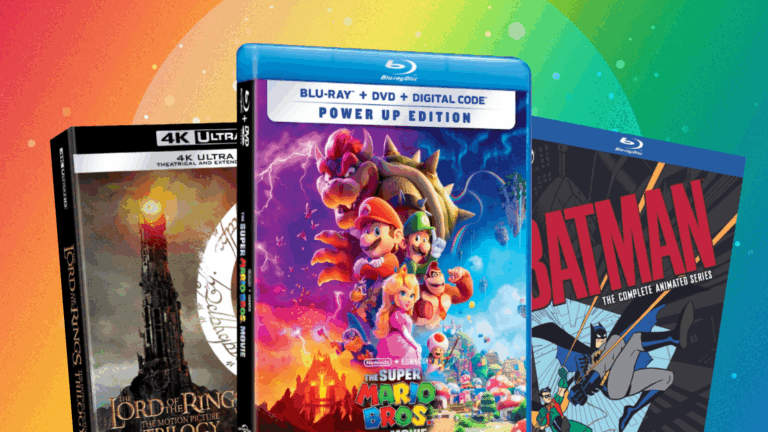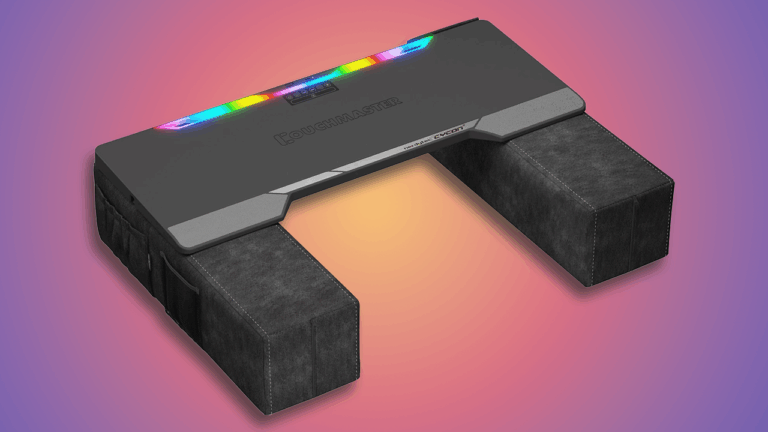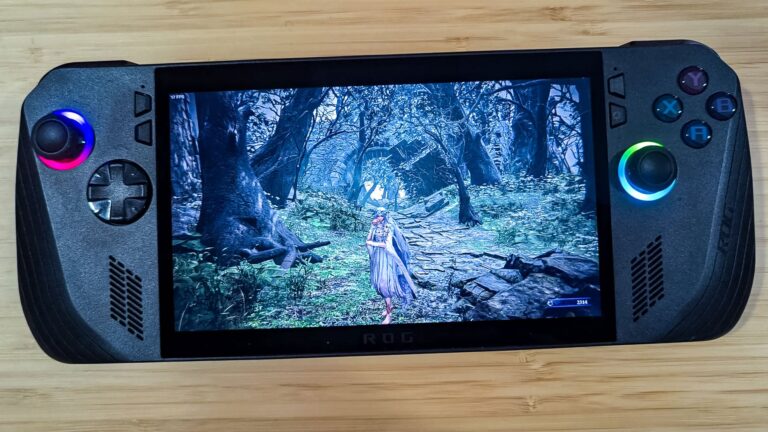Introduction: Affordable Gaming Is Still Possible in 2025
It’s clear that graphics card prices have skyrocketed compared to previous years. However, there’s good news for budget-conscious gamers: affordable GPUs are making a strong comeback. The recent release of the Intel Arc B580, priced at just $249, has set a new standard by outperforming many cards under $300. Instead of settling for outdated models like the GTX 1070 Ti from 2014, gamers can now access quality hardware without breaking the bank.
While high-end cards like the RTX 5080 starting at around $999 dominate top-tier gaming setups, mid-range options such as the RTX 5060 Ti at $450 remain budget-friendly alternatives. These cards provide excellent performance for their price, making them ideal choices for gamers who want quality without overspending.
Quick Overview: Top Budget GPUs in 2025
Despite their lower price tags, these GPUs can deliver impressive gaming experiences—especially if you manage your expectations. For example, the RTX 5060 Ti isn’t a 4K powerhouse, but it excels at 1080p and even 1440p gaming, making it the perfect choice for the most common display resolutions according to recent surveys. The key takeaway? You don’t need to spend thousands to build a great gaming PC in 2025; you just need to pick the right budget-friendly GPU.
Understanding What Defines a Budget GPU
What Do We Consider a “Budget GPU”?
Today’s graphics cards come with hefty price tags, with NVIDIA’s flagship models reaching up to $2,000. On the other hand, more affordable options still cost hundreds of dollars. Historically, a budget GPU was around $200 and provided solid 1080p gaming performance in the latest titles. But in 2025, that’s no longer the case. For instance, the AMD Radeon RX 9060 XT, priced at approximately $349, is considered a budget card by current standards.
From a perspective standpoint, if high-end cards hover around $1,000 and mid-range models like the AMD Radeon RX 9070 come in at about $449, then a true budget GPU falls within the $200 to $300 range. There are even cheaper options available, but they often involve compromises, such as opting for older-generation hardware. Nonetheless, older GPUs like the RTX 3060 or RTX 2060 still perform well at 1080p—even without the latest features.
Ultimately, ask yourself: Is top-tier ray tracing a necessity for your gaming experience? Chances are, you can get by without it, especially if you’re focused on traditional gaming performance.
The Best Budget Graphics Card in 2025
Intel Arc B580: The Best Value for Under $300
For years, budget gamers have had limited options, especially as manufacturers focused on flagship models. Nvidia, for example, has yet to release a successor to the GTX 1660 Ti, leaving many to settle for older GPUs. Fortunately, Intel has entered the scene with its second generation of Arc graphics cards, offering an excellent entry point for budget gaming. The Intel Arc B580, starting at just $249, stands out as the best budget GPU in years.
Equipped with 12GB of VRAM—significantly more than the 8GB found in comparable cards like the RTX 4060 and Radeon RX 7600—this GPU is well-suited for resolutions above 1080p. During testing, it delivered outstanding performance at 1440p, thanks largely to its ample framebuffer. In multiple benchmarks across eight popular titles, the B580 demonstrated the lowest cost per frame, averaging just $3.72 per frame at 1440p, making it the most economical choice for gamers watching their budgets.
One surprising aspect is its ray tracing capability. Even with modest hardware, the B580 handles ray tracing well, often outperforming more expensive options in demanding titles like Cyberpunk 2077. At 1440p with Ultra ray tracing settings and XeSS enabled, it maintained a smooth 60fps average—better than the RTX 4060’s 49fps.
However, as a second-generation product, the B580 still has some bugs to work out, such as graphical glitches in certain games. These issues are common across Intel’s recent GPUs and are expected to be resolved with future driver updates.
Budget Champion Under $450: Nvidia GeForce RTX 5060 Ti
Affordable Powerhouse for Gaming and Creativity
Though Nvidia has faced challenges in following up its RTX 4000 series, the RTX 5060 Ti offers a significant upgrade over the previous generation’s RTX 4060 Ti. With 36 compute units—up from 34—the card provides better performance at a similar price point, starting around $449.
One of the standout features is DLSS 4, which uses AI to interpolate frames, dramatically boosting frame rates with minimal input lag. This makes it perfect for gamers who want high refresh rates without sacrificing visual quality. During testing, the RTX 5060 Ti proved to be roughly 23% faster than the RTX 4060 Ti and 43% faster than the RTX 3060 Ti, easily handling demanding titles at 1080p and 1440p with maximum settings.
Keep in mind, there are two versions of the RTX 4060 Ti: one with 8GB of VRAM and another with 16GB. For gaming at higher resolutions or with future titles, opting for the 16GB version is highly recommended to avoid memory bottlenecks.
Best Budget AMD GPU: Radeon RX 9060 XT
Strong Performance at a Competitive Price
AMD’s Radeon RX 9060 XT, priced around $349, is a significant step forward for budget AMD cards. Built on the new RDNA 4 architecture, it outperforms its predecessor, the Radeon RX 7600 XT, by approximately 40% at 1080p, with some cases reaching 70% improvement.
In demanding titles like Cyberpunk 2077, the RX 9060 XT maintains a playable 80fps at 1080p with ray tracing set to ultra. While it doesn’t target high-refresh 4K gaming, it provides excellent performance for 1080p gaming with most settings maxed out. If the price remains stable around $350–$400, it offers fantastic value for gamers wanting smooth gameplay at budget prices.
Entry-Level Gaming for Under $200: MSI GeForce RTX 3050 Gaming X
Best Affordable GPU for Casual and Esports Gaming
The RTX 3050, part of Nvidia’s previous generation, remains an affordable choice for gamers on a tight budget—currently around $179. While it’s an older card, it still delivers solid 1080p performance in most titles, especially esports and indie games. To run newer, more demanding titles smoothly, you may need to lower graphics settings.
Despite its age, the RTX 3050 benefits from Nvidia’s third-generation Tensor cores, enabling DLSS 2.0, which improves performance and image quality in supported games. However, enabling ray tracing is generally not advisable on this card, as it can severely impact frame rates. Overall, it’s an excellent option for casual gamers or those just starting their PC gaming journey.
Mid-Range Marvel: AMD Radeon RX 9070
The Best Value for Under $600
While not traditionally considered a “budget” GPU, the AMD Radeon RX 9070 offers fantastic value at roughly $499, making it the top choice for gamers seeking high-quality 1440p performance. With 16GB of VRAM, it comfortably handles modern games at high settings and even some light 4K gaming.
In benchmarks, the RX 9070 outperformed similarly priced Nvidia options, such as the RTX 5070, especially with ray tracing enabled. For example, in Cyberpunk 2077, it achieves 93fps at 1440p with ultra ray tracing and FSR set to balanced—surpassing the RTX 5070’s 90fps. Its ample VRAM also ensures longevity as future games demand more memory, making it a smart investment for mid-range gaming PCs.
Choosing the Right Budget GPU
How to Make the Best Pick for Your Needs
Selecting a budget GPU doesn’t have to be daunting. Focus on what you want to achieve with your system—whether that’s smooth 1080p gameplay, some light 1440p gaming, or content creation. Pay attention to factors like frame rates, resolution support, and compatibility with your existing hardware.
Research the system requirements of your favorite games and look for deals or sales. Prices fluctuate frequently, so waiting for discounts or bundle offers can help you maximize your money. Also, consider older models that may drop in price once new GPUs are released, often offering excellent value for their performance.
Frequently Asked Questions about Budget GPUs
How much should I budget for a gaming GPU?
For less demanding titles or casual gaming, a budget GPU in the range of $200 to $400 is usually sufficient. For higher-resolution gaming at 1440p or 4K, expect to spend $500 or more for a capable card.
What’s the best budget GPU for content creation?
If you’re into content creation but can’t afford top-tier hardware, the Nvidia GeForce RTX 5060 Ti offers an excellent balance. It has enough CUDA cores for editing, rendering, and creative workloads, along with DLSS 4 support to boost productivity in compatible applications.
Final Tips for Budget Gaming in 2025
Keep an eye on sales, discounts, and upcoming releases. Sometimes, older or less popular models can provide incredible value, especially when prices are reduced. Building a capable gaming PC doesn’t necessarily require a flagship GPU—smart choices and timing can make budget gaming a reality.
Jackie Thomas is the Hardware and Buying Guides Editor at IGN, bringing years of experience reviewing graphics cards and PC components. She’s passionate about helping gamers find the best gear for their needs and budget. Follow her at @Jackiecobra for more expert insights.













